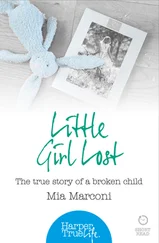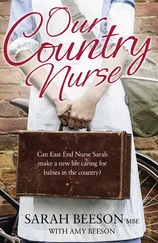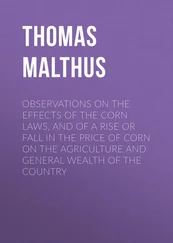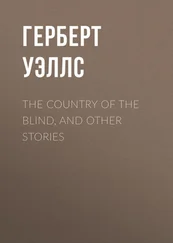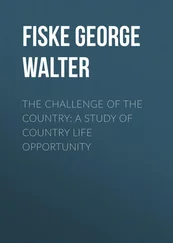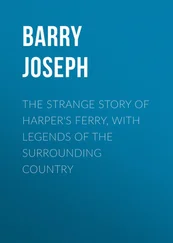In the hotel room, I unpacked some vanilla candles and lit them one by one. This was how Sabine used to soothe herself in strange places. I picked up a grainy-paged magazine from the hotel nightstand and flipped through. It had no photos or interviews in it, though, and what use did I have for a magazine without photos or interviews? The room began to smell like cake. I lay back on one of the beds. Through the little ring at the top of the mosquito net I saw a cockroach, crawling in a slant across the ceiling. I could feel myself falling asleep, which these days was my default state.
I hadn’t worked, or looked for work, in five months. I had never been a morning person to begin with, and after Sabine died, getting up for jobs or castings didn’t feel possible. Leaving the house at all didn’t feel possible. Depending on what kind of sadness I was having, I lived on either what Sabine and I had called vitamin C 3—coffee, always black with no sugar; cigarettes from the corner bodega; and cocaine from a model friend who dealt on the side and came around one morning a week — or pizza and Chinese food delivery, whose flat boxes and take-out buckets littered the living room tables; the kitchenette counter; even, eventually, my bedroom floor. For a few weeks my booker tried to call and get me back out there. “Alice, I have a possibility in L.A.,” he said. “The work would do you good. Can you be ready in an hour?” I deleted every voice mail and returned to bed. Sleep became my needy, whining lover, pulling me back down the minute I tried to go anywhere else. For a model on the wrong side of twenty-five, this was disastrous. We were told, sternly and often, that the difference between the “huge” girls and us struggling dime-a-dozen girls was that the huge knew how to wake up early, booking this job and that while the rest of us, who might be just as pretty, slept. My own mother, by her account, could have been huge — was on the dizzying, starlit verge of huge, when some D-list runway show producer knocked her up and saddled her with me.
—
In Manila’s garment district the next day, I stood outside an office among forty girls, all waiting for our names. Casting calls were nobody’s favorite. “Cattle calls,” we’d say, or go-sees. We would stand there, sit if we were lucky, and wait an hour or more, usually to hear we weren’t right. Sometimes they liked a girl a little but not enough. Or asked us back once, but not a second time. “I didn’t realize,” one London editor told me, “that you’d got such a very long torso.” In Milan a woman told her partner: “There’s nothing wrong with her per se, ” and shook her head at me.
A year ago, I would have sized up the girls around me. Usually at least a handful didn’t stand a chance. Girls who overdressed, for instance — small and swallowed up in borrowed suits and pumps — or who caked on the makeup, were the clear rookies. You wanted to look chic but clean: a blank, expensive canvas. My uniform was Chloé jeans, a fitted tunic, and canvas slippers I picked up by the dozen in Chinatown. Underneath (and this was key) I wore my flimsiest, most delicate designer underwear. High-end quality was essential, matching less so. Odds were they’d strip you down to really get a look. Jeans were a gamble I took pride in pulling off; my booker liked to say that some girls looked cute enough in denim “but in couture, shazzam! They vanish.”
A year ago, I’d have looked around for that kind of girl, or wondered if I was one. But now a crowded room of hopefuls felt like home. I showed one girl — Rae was her name — my book and looked at hers. My tear sheets were old, in fashion time. I’d avoided my booker for so long, in fact, that he stopped calling about jobs and started calling about roommates. “We got a new girl in from Czech Republic that needs a place to live,” he said. “She’s been getting steady work.” The following week he had a new girl in from Senegal; the next, Argentina. “Alice,” he said, “let’s not pretend you can afford that place on your own.” This was true. After paying double my old rent for five months, I had almost nothing. A few hundred dollars in my bank account was keeping me, alternately, in vitamin C 3or in pizza and Chinese. I started signing credit-card “convenience” checks to my landlord. I didn’t want a new roommate.
When I returned Rae’s book, she made a crack about her morning fight with bronzer that the bronzer won. There were bands of orange at her wrists and elbows where the spray-on stuff had pooled. Seven months ago I might have pitied Rae or hated her. She had extremely narrow hips, and clavicles that could slice cheese. Now I laughed along. When a head with silver hair and smooth young skin that didn’t match it poked out of the office door and said, “Alice Anders?” I felt a little sad to leave my new friend.
The silver-haired woman introduced herself as Carmen. She was tiny, barely tall enough to stare into my chest. She flipped through my book quickly. It was always quick, the crinkle and slap of the plastic-sleeved pages. I never could be sure they really saw me. Now, as Carmen and some others eyed me, I filled in their thoughts: pretty, but then what? All of them are pretty. People in our business often used the term “It.” Does she have It? There was a girl Sabine couldn’t stand, who for some months was getting every booking in New York, it felt like. Sabine said, “She is full of It.” “Dipsh-It,” she said about someone else. But she believed — we all did — in “It.”
“It” was different for everybody. Sabine was moderately exotic in a way that pleased a range of people. The almond-shaped eyes, the pillowy lips, the skin that coppered easily in summer, could all be played up or down. She once brought home a brown man who claimed he only dated white women; he gave her sapphire earrings and said, “after your eyes”—which were her father’s, blue. Another time she brought home a white man who claimed he only dated brown women; this one gave her an original woodcut etching by Gauguin, and a rare edition of Gauguin’s travel diaries too. At go-sees, there was a lilt about Sabine — an upturn to her face that musically matched her voice. Even her name was a little bell. There was a certain lightness to her personality that came with not planning to do this forever. Not wanting any job that much.
I did not have “It.” Sexy or pretty or even beautiful weren’t It. Those weren’t enough. Editors were always asking me, “Where are you from? Utah? Kentucky?”—always wanting some Cinderella story to fit my sunny, corn-fed look. But I was from New York. No one discovered me at a Wendy’s in the Bible Belt. My mother had done some catalog work herself, and I signed on with her booker at fifteen.
Years ago a girl in the industry got raped, had her face sliced up beyond recognition and couldn’t work anymore. When I heard this story, I had to wonder what else in the world I was good at. I could think of one thing: I was flexible. There was a trick I had been doing since first grade: I would knit my fingers together, lock my elbows, and stretch the ring of my arms to just behind my head. Here I’d pause — for effect; this is as far as most people can go. Then I’d stretch farther, all the way, until my clasped hands were at my tailbone. I would do it slowly the first time, to simulate a lot of effort, then go back and forth faster and faster, until I was snapping my arms from front to back like a metronome. That’s what Sabine called the trick when she first saw it, the Metronome. I could turn my toes out until they faced backward, do the splits both ways, and windmill each arm 360 degrees from its shoulder socket. These things would still be possible if my face were ruined — but without a body? I couldn’t imagine. I blanked. Sometimes when I thought of what else was out there, I felt there should be more and weirder options. I felt I would do a very fine job of being a vapor, for example, or a silk scarf. I would make a very good wall.
Читать дальше






